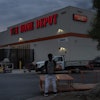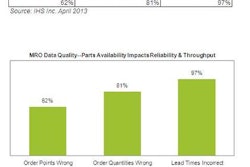This blog is part two in a three-part series by FORTE. To read the first part, please click here.
Here's the situation: Your current DC capacity is nearly maxed out. Marketing is pushing hard to add new channels of distribution, which ultimately translates into multi-channel distribution. And if you come anywhere near the five-year corporate projections for growth - both organic and through M&A opportunities - you've got to do something. Whether that is expanding existing facilities and capacities, the building of a new optimized DC, expanding the distribution network or something in between, it begins with planning.
The planning phase can be divided into two parts: The Numbers (data collection and analyses) and the Concept (strawman layout options). This blog addresses the former, while next week's blog will help you understand how to sketch out several alternative solutions.
The first step in planning improved DC capabilities is to clearly understand your company's strategic goals and objectives and determine how distribution/fulfillment fits into that vision. Study the key performance indicators (KPIs) that have been established for revenue and income growth (both organic and inorganic), and see how and where this growth is projected. Zero in on the marketing strategies, paying particular attention to product and channel plans. These corporate KPIs and marketing strategies will provide the framework for your DC or network optimization plans, helping you to set your own KPIs in the form of operating performance indicators (OPIs) such as volume, velocity, accuracy, labor utilization rates, etc. It's likely the corporate KPIs and your corresponding OPIs for each functional area's productivity targets may prove too costly or impractical to achieve … and you'll probably have to compromise during the design phase. But at this time you're in the concept phase, so shoot for the moon.
Now we move on to an exhaustive (if not exhausting) analysis of operating data. If you have "smart" WCS software with the capability and capacity to collect, store, aggregate and categorize this data, you're well on your way to determining optimal flow of SKUs through a DC facility. If not, you may want to hire a consultant who can help you achieve this critical requirement.
During this analysis, each functional area is examined along with product and customer order characteristics to anticipate future fulfillment capacity demands. Individual processes too are studied to determine changes that may yield faster, more accurate throughput. This evaluation ranges from vital high-level functions such as WMS-WCS capabilities/integration to the more routine processes and procedures of receiving, putaway, reserve storage, replenishment, picking, VAS, packing, shipping, etc.
Yes, it seems (and is) overwhelming. When you're looking at everything from pre-labeling to advanced vendor shipping notification in the search for incremental efficiency gains and the attainment of ideal KPIs, where do you focus? Here's a tip from our FORTE experts: Practically speaking, picking, replenishment, packing and the ability to quickly move personnel are inevitably the most critical areas for improvement. Pay close attention to them, for they are almost always the activities where the most improvement can be made and the keys to an effective solution.
The key data ¹ to dissect carefully in granular detail includes:
- Item information for each SKU handled (item master: size, weight, pallet, case, innerpack and each)
- Order history information for the year summarized to average and packs
- Order details
- Warehouse location map and inventory history
- Inbound receipt details
- Customer information
- Value-added services requirements
It takes time, patience, and diligence to collect and analyze this data, but it is imperative before moving on to the conceptualization part of the planning phase. We'll look at that in the next blog.
This blog previously appeared as a blog on FORTE. To view the original, or for more information, please visit www.forte-industries.com.






















